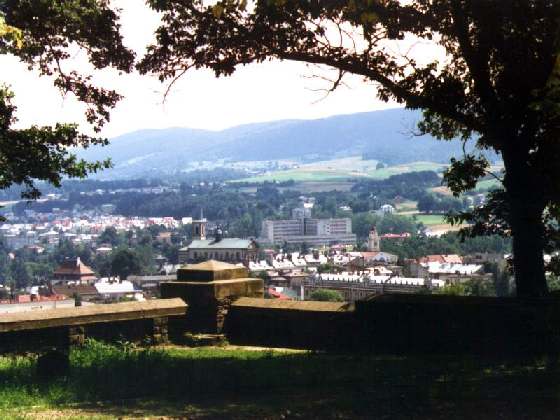

Present Day Gorlice
Gorlice is in the southern part of Poland in the Province (Voivodeship) of Malopolska ("Little Poland"). Lying between the Ropa and Sekowka River valleys, the city is surrounded by the Carpathian Mountains. The population (2008) is 29,500 and the city sits between the towns of Jaslo and Nowy Sacz, about 63 miles from Krakow. "Gorlice" is pronounced "Gor-leetz-eh," with the stress falling on the middle syllable.
Early History of Gorlice
Gorlice was established in 1354 and quickly became known for its markets and fairs, attracting merchants from around the region. In addition, the surrounding area held abundant sources of oil, with mining operations dating back to the 14th century. In the 19th century, Ignacy Lukasiewicz, a renowned pharmacist and inventor, moved to Gorlice where the following year, he constructed the first ever kerosene streetlamp. Prior to 1772, Gorlice was part of the country of Poland. The city was granted de non tolerandis Judaeis, which prohibited Jews from settling within its borders, although there was a large Jewish population in the nearby town of Nowy Sacz.
Gorlice in Galicia
Between 1772 and the end of World War I, the city came under Austrian rule as part of the region of Galicia. Eventually the region became densely populated by Jews, with many of them settling in Gorlice during the 19th century. Life in 19th-century Gorlice was peaceful. Jews communicated with each other in Yiddish, the universal language of European Jewry despite local differences in pronunciation. On the Sabbath, children frolicked freely on strolls with their parents through the fields to the south of Gorlice. In summer, people went bathing in the river that flowed through the eastern part of the city. They sometimes called this the "River Nile." Because of its setting in the surrounding mountains, Gorlice's Jews compared their town to Jerusalem.
Gorlice During World War I
One of the largest battles of World War I took place on the outskirts of Gorlice on May 2, 1915. German and Austro-Hungarian forces attacked along a 28-mile Russian front, breaking through and pushing Russian forces back 300 miles. Gorlice sustained tremendous damage. The country of Poland was re-established at the end of World War I, with Gorlice once again becoming Polish. The rebuilding of the town began after the war but was halted by the start of World War II.
World War II and the Holocaust
By the outbreak of World War II, about 5,000 Jews lived in Gorlice. Many were able to flee to Soviet-occupied territory before the German invasion, but when the Germans arrived, many Jews were immediately arrested and imprisoned. The Germans established a Judenrat (a council of Jewish representatives established to carry out Nazi policies). A Jewish labor office was also established to supply the Germans with workers. The Gorlice ghetto was opened in 1941 and Jews from the city and surrounding regions were crowded into its confines.
In 1942, about 70 supporters of Zionist groups were killed in Gorlice and the adjacent town of Biecz. Later that year, increasing numbers of young men from the ghetto were sent to German labor camps. Heavy fines were assessed on the community on multiple occasions, and Jews from the towns of Bobowa and Biecz were relocated to Gorlice.
On August 14, 1942, approximately 700 inhabitants were selected by the Gestapo to be transported to the town of Garbacz, where a mass grave was prepared. They were ordered to undress and were shot at the edge of the grave. Most of the remaining ghetto inhabitants were transported to the extermination camp, Belzec. Only about 700 Jews remained. Two additional selections were made in September with transportation of those chosen to Belzec. After this, only factory workers who lived in the factory buildings remained; they were relocated to labor camps on January 6, 1943.
After the war, 30 Jewish families returned to Gorlice. Finding their property had been looted, their cemetery desecrated, and facing continued antisemitism, they soon left the region.
This page is hosted at no cost to the public by JewishGen,
Inc., a non-profit corporation.
If it has been useful to you,
or if you are moved by the effort to preserve the memory of
our lost communities, your
JewishGen-erosity would be deeply appreciated.
|
Compiled by Susan Kim Created June 2023 Updated: May 2024 Copyright © 2023 Susan Kim |
Top of Page